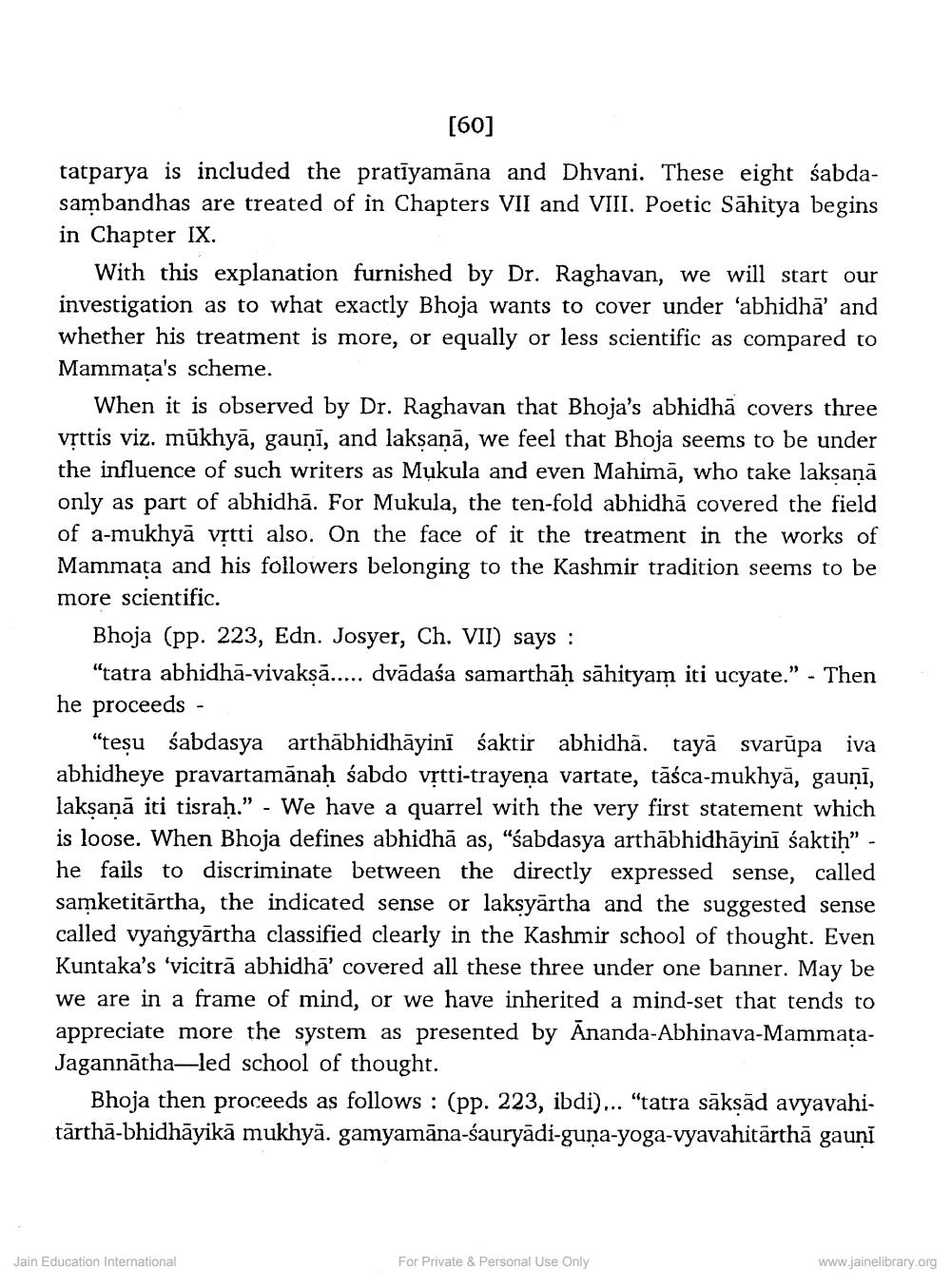________________
[60]
tatparya is included the pratīyamāna and Dhvani. These eight sabdasambandhas are treated of in Chapters VII and VIII. Poetic Sahitya begins in Chapter IX.
With this explanation furnished by Dr. Raghavan, we will start our investigation as to what exactly Bhoja wants to cover under ‘abhidhā' and whether his treatment is more, or equally or less scientific as compared to Mammata's scheme.
When it is observed by Dr. Raghavan that Bhoja's abhidhá covers three vịttis viz. mukhyā, gauni, and laksanā, we feel that Bhoja seems to be under the influence of such writers as Mukula and even Mahimā, who take laksanā only as part of abhidhā. For Mukula, the ten-fold abhidhã covered the field of a-mukhyā vrtti also. On the face of it the treatment in the works of Mammața and his followers belonging to the Kashmir tradition seems to be more scientific.
Bhoja (pp. 223, Edn. Josyer, Ch. VII) says : "tatra abhidhā-vivaksā..... dvādaśa samarthāḥ sāhityam iti ucyate." - Then
he proceed
"teșu sabdasya arthābhidhāyinī śaktir abhidhā. tayā svarūpa iva abhidheye pravartamānaḥ śabdo vịtti-trayena vartate, tāśca-mukhyā, gaunī, laksaņā iti tisrah.” - We have a quarrel with the very first statement which is loose. When Bhoja defines abhidhā as, "sabdasya arthābhidhāyini saktih". he fails to discriminate between the directly expressed sense, called samketitārtha, the indicated sense or laksyārtha and the suggested sense called vyangyārtha classified clearly in the Kashmir school of thought. Even Kuntaka's 'vicitrā abhidha' covered all these three under one banner. May be we are in a frame of mind, or we have inherited a mind-set that tends to appreciate more the system as presented by Ananda-Abhinava-MammațaJagannātha-led school of thought.
Bhoja then proceeds as follows : (pp. 223, ibdi)... "tatra sākṣād avyavahitārthā-bhidhāyikā mukhyā. gamyamāna-sauryādi-guna-yoga-vyavahitärthā gauni
Jain Education International
For Private & Personal Use Only
www.jainelibrary.org




